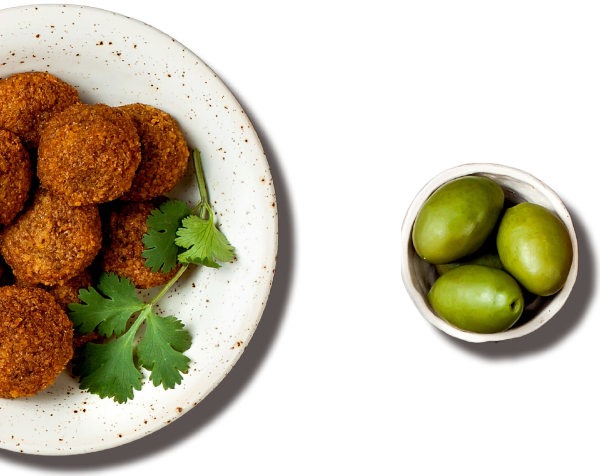

By Donna Green Goodman
“The Mediterranean diet is perhaps one of the most widely researched eating patterns in the world. Following a Mediterranean diet is linked with a reduced risk of heart attack and stroke, a decreased risk of certain cancers (e.g., colorectal, head and neck, respiratory, gastric, liver, and bladder), a slower progression of atherosclerosis, and many markers of healthy aging” (Today’s Dietitian).
Whenever I thought of Mediterranean food, my mind went to things like falafels, olives, gyros, and spanakopita, which are connected to Greece. As I have looked a little more closely at the Mediterranean foods of Africa, I have discovered familiar flavors that are integral to this type of cuisine.
Some of the foods that are central to this region include cabbage, artichokes, dandelion greens, sweet potatoes, eggplants, and collard greens. They also use grains like barley, bulgur, couscous, millet, oats, wheat berries, polenta, and rice. Favorite fruits are dates, figs, melons, olives, pumpkin, pomegranates, and strawberries. While poultry, fish, seafood, and dairy products are part of the diet, they are eaten in small amounts. And, while the countries on the north side of the Mediterranean include wine/alcohol, many of the countries on the south side in Africa are Muslim and forbid alcohol consumption.
Dependence on nuts such as almonds, cashews, pistachios, and sesame seeds and beans such as chick peas, fava beans, lentils, and split peas is crucial for deliciously seasoned dishes. Herbs and spices like anise, cumin, fennel, garlic, mint, parsley, rosemary, sage, and thyme are favorites for their powerful flavors and phytochemical benefits.
I searched the internet and Pinterest looking for recipes on the south side of the Mediterranean Sea and found so much. Vegan Egyptian Blogger Nada, has some amazing recipes at onearabvegan.com. I’m sharing one of her curry recipes that sounds absolutely delicious and would be perfect with one of the wraps!
Here are some of the traditional foods that I have experimented with and why you should give them a try.
They take a while to cook and yield a sweet, nutty, chewy addition to meals. They are beneficial for preventing disease and restoring health.

I hope you enjoy eating on the south side of the Mediterranean. Oh, and if you like baklava, check out Moroccan Baklava recipes. They are full of health enhancing nuts like walnuts, almonds, and pistachios.

Juice of one lime
Sea salt to taste
Saute’ the onions with the curry paste and a splash of vegetable stock in a large pot on medium heat until fragrant, around 3 minutes. Add in the bell peppers (and more stock as needed) and cook for a further 2 minutes, stirring frequently. Add in the sweet potatoes, coconut milk, coconut cream, and the remainder of the vegetable stock and season with sea salt to taste. Bring to a boil and then cook on medium heat for 15 minutes before adding in the chickpeas, crushed garlic, lime juice and chopped coriander. Cook for a further 5-7 minutes or until the potatoes are completely cooked through. Adjust seasonings as needed and serve with your preferred grain of choice (couscous, brown rice, millet) and a sprinkling of fresh coriander. https://www.onearabvegan.com
VARIATION: Add roasted peppers, Jalapeños, roasted onion, olives, chives, spices; you name it!


